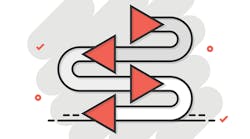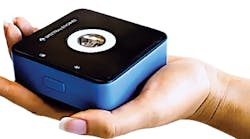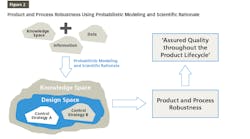For quite some time, the highest compliment that could be paid to a hitter or pitcher in baseball has been to say, “he/she hits/throws like a machine.” We refer to something being performed with precision, over and over, as “machine-like.” So it stands to reason that, if we automate any system (correctly), it will perform better than a manual process. Luckily for the pharma industry, the PAT guidance was the beginning of a “brave new world.” Followed by documents from the ICH, FDA and EMA, this nugget started us down the road to understanding and control of pharmaceutical processes.
Want some hard examples? Glad you asked. The first step toward automation was raw material qualification. Prior to 1984, the only tools available were compendial methods (ASTM, USP, BP), all of which were designed to assure purity (e.g., heavy metals test), not how well these materials could be made into dosage forms. (To be fair, they originated while pharmacists were constructing capsules and “pills” in the back of their shops. Since dosage forms were hand-made, parameters such as morphology, particle size distribution, etc., were not necessary to know.)
Moving to the 1960s, 70s, 80s, we were still relying on 1940s analytical methods. With ever-increasing machine speeds and batch sizes, this paradigm was no longer serving us well. Fortunately, the EMEA (now EMA) asked European manufacturers to measure every container of every raw material. The sheer volume of excipients made compendial tests impractical (slow and expensive). Fortunately, near-infrared came onto the scene. By 1985, Sandoz (E. Hanover, NJ) had reduced the time to qualify 200+ bags of lactose from weeks to hours. In addition to merely being a faster ID method, it was seen that percent moisture, mean particle size, polymorphic form, degree of crystallinity and more, were easily determined with the same scans used for simple ID. No longer would a statistical sampling need be used, but ALL containers could be checked for “goodness.”
Why is all this information useful before the fact? If the industry actually wishes to DESIGN its dosage forms, these data help formulators and production staff to better “build” the tablets, capsules, etc. For example, under a traditional (cGMP-based) NDA or ANDA, blending time for powder mixture is “set in stone.” That means a lot of powder is blended for, say, 25 minutes, with no idea of whether the mix is good, under- or over-blended. It has been shown that particle size variations affect the time needed, but nothing changes with blending time, no matter what is known about the materials used. Under a PAT program, a spectroscopic monitor (i.e., NIR or LIF) allows the blending process to continue only until the blend is uniform. That is, the “25-minute” blend could be good at 20 or 15 minutes or need to blend for 30 or 35 minutes, but we wouldn’t know until possibly a failing batch “happens.”
Using a monitor would have two immediate results:
Each lot would be blended to the same level, presumably “as good as possible.”
With the potential time saver (more than a year) the equipment may be used for more batches than before - the equivalent to having more equipment.
The savings and quality increases are at least as proportionate for each step of the production stream: granulations may be dried to the correct level, not timed; 100% of tablets may be examined for identity and level of API(s); coating may be measured as applied to assure proper coating (especially important if it contains an API). Even packaging is enhanced by monitors (as per PAT) to assure correct materials (important in birth control medicines) and that each blister pack is filled (ID and placement is good for clinical supplies, as well).
So, yes, your first efforts at PAT will be tentative, awkward, halting and primitive, despite your attendance at conferences and heeding the advice of consultants and instrument companies. Indeed, it will resemble the first assembly lines that Mr. Ford built; “old-fashioned” in your rear-view mirror, but light years ahead of “building” your batches of tablets by hand. The quality and consistency of your first PAT attempt will be so much better than the current approach, it will be a Picasso versus your old “Etch-A-Sketch” production line.
In short, PAT is a win/win/win. What’s next? Continuous manufacturing!




